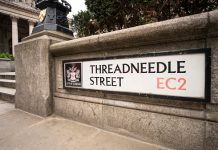It looks like the Federal Reserve (Fed) will announce its latest monetary policy decision to a public with relatively calmer nerves compared to a few days ago.
The VIX index eased sharply from last week’s levels on bank relief, gold tanked to $1935 per ounce and indices on both sides of the Atlantic Ocean were comfortably higher on Tuesday. The Stoxx 600 gained 1.33%, as the S&P500 closed the session above the 4000 mark.
The pressure on US treasuries eased, as well, and the US 2-year yield is now around the levels it was before Fed President Jerome Powell’s speech to the Senate which spurred the expectation of a 50bp hike for week’s meeting.
And even if Powell’s testimony looks like it was ages ago, the bank stress that hit the fan during the pre-Fed silent period prevented the Fed members to give their opinion about an adequate policy response,
As a result, investors have been left to themselves to shape the expectations for today’s decision.
And even though activity on Fed funds futures looks like it finally is pointing at a solid-ish consensus that the Fed should hike rates by 25bp today, no one really knows how much importance the Fed will assess to the latest banking stress, which, in reality, resulted in an uptick in Fed’s balance sheet due to additional liquidity, but which also tightened the financial conditions sharply.
Because banking crisis raised worries that credit flow from the US regional banks into the economy would slow. The premium that lenders ask for lending to high risk borrowers popped, while the flight to safe US treasuries pulled the US sovereign yields lower.
Gap between high yield and sovereign bonds popped above the 5% psychological mark – which traditionally served as a red flag hinting at higher-than-average credit risk in the maret.
And the higher credit risk, and tighter credit availability hint that the US economy could indeed continue to slow, and eventually step into recession – which would, in return, slow demand and pull inflation lower without further intervention from the Fed.
That’s why, the chances are that the Fed hikes by a final 25bp to stick to their promise to bring the US interest rates to around 5%. But we could certainly forget about a further advance to 5.5-6%.
For equities, a softer Fed and unexpected liquidity is supportive in the short run. In this respect, we could see the S&P500 rally extend.
Yet, recession fears, and recession itself could catch up investors, weigh on revenue and earnings expectations and limit the upside potential.
In numbers language: it could be interesting to consider selling a potential S&P500 rally into the 4200 peak – if of course we don’t have data pointing at flourishing US economy despite all challenges.
In the FX, the US dollar is expected to continue its journey to the south, if, of course, the Fed doesn’t come with a hawkish surprise at today’s decision.
The US dollar index has been giving back field since last September. We saw a rebound between February and March due to the rising hawkish Fed expectations, but the dollar index never breached a key Fibonacci resistance to challenge the past 6 months negative trend, the major 38.2% Fibonacci retracement on the depreciation that started end of September.
So, if all goes according to the plan – meaning the Fed hikes by 25bp and signals the end of rate hikes – we will likely see the US dollar return below the 100 level.













